


Rory Gallagher (2 March 1948–14 June 1995) was an Irish blues/rock guitarist, born in Ballyshannon, County Donegal, part of the Province of Ulster. However, he grew up in Cork City in the south of Ireland. He is best known for his solo work, releasing several albums, and for his tenure in Taste during the late 60s. Rory Gallagher sold in excess of 30 million albums worldwide.
Career
Gallagher's first bands were showbands which played the popular hits of the day. In 1965 he turned The Impact into an R'n'B group which played gigs in Ireland and Spain. He formed Taste in 1966, but the line-up which gained fame was formed in 1967, featuring Gallagher on guitar and vocals, John Wilson on drums and Richard McCracken on bass. The group released the albums, Taste and On the Boards, and made two live recordings, Live at Montreux and Live at the Isle of Wight. The latter appeared a long time after the band broke up at that same Isle of Wight Festival in 1970.
After the break-up of Taste, Gallagher toured under his own name, hiring bass player Gerry McAvoy to play on his first eponymous album (a relationship that would last twenty years on the road) and Wilgar Campbell on drums.
After the break-up of Taste, Gallagher toured under his own name, hiring bass player Gerry McAvoy to play on his first eponymous album (a relationship that would last twenty years on the road) and Wilgar Campbell on drums.
The 1970s were Gallagher's most prolific period. He produced ten albums in that decade, including two live albums, Live in Europe and Irish Tour '74, which for many best captured his bands' raw and naturally dynamic qualities.[citation needed]. In 1972 he released the album Deuce, which is essentially three-piece R&B. Also in 1972 he was voted Melody Maker's Top Musician of the Year, dethroning Eric Clapton[3]. His album Live in Europe has been a big selling album not only in Ireland but also internationally.
Gallagher played and recorded what he said was "in me all the time, and not just something I turn on ...". Though he sold over thirty million albums world wide, it was his marathon live performances that won him greatest acclaim. His passion and skill for the blues is documented in the 1974 film Irish Tour '74, directed by Tony Palmer.
The line-up including Rod De'Ath on drums and Lou Martin on keyboards stayed together between 1973 and 1978. Other release highlights from that period include Against the Grain, the jazz-tinged Calling Card album (assisted in production by Roger Glover (bassist with Deep Purple) and the hard blues-rocking Photo Finish and Top Priority albums.
A dedicated follower of blues music, Gallagher played with many of the genre's biggest stars, collaborating with Muddy Waters and Jerry Lee Lewis on their respective London Sessions in the mid 70s. Gallagher was also invited to tryout with The Rolling Stones following the resignation of Mick Taylor, with Canned Heat after the departure of "The Eagle", and was David Coverdale's 2nd choice (after Jeff Beck) to replace Richie Blackmore in Deep Purple.
In the 1980s he continued recording, albeit at a slower pace, producing Jinx, Defender, and Fresh Evidence. These albums progressed towards a more mature blues style. After Fresh Evidence, he embarked on a successful tour of the United States.
DeathGallagher's health and his ability to perform were increasingly compromised by excessive use of alcohol, combined with drugs that had been prescribed to alleviate his anxiety about flying.[citation needed] From the late 1980s, he suffered increasingly poor health, yet he continued touring. By the time of his final performance on 10 January 1995 in the Netherlands, he was visibly unwell. A liver transplant became necessary and was nearly successful, but just before being discharged from the hospital, an MRSA infection developed.[citation needed] His health quickly worsened and he died in London on 14 June 1995. Gallagher was never married and he had no children.
Rory's final resting place is in St Oliver's Cemetery, on Model Farm Road just outside Ballincollig near Cork City, Ireland. His headstone is a replica of an award he received in 1972 for International Guitarist of The Year.
LegacyIn 2003, Wheels Within Wheels, a collection of acoustic tracks, was released posthumously by Gallagher's brother Donal Gallagher. Collaborators on this album included Bert Jansch, Martin Carthy, The Dubliners and Lonnie Donegan.
Many modern day musicians, including The Edge from U2, Slash of Velvet Revolver, Johnny Marr of the Smiths, Glenn Tipton of Judas Priest, Vivian Campbell of Def Leppard and Brian May of Queen, cite Gallagher as an inspiration in their formative musical years.
Gallagher's Stratocaster
Gallagher was always associated with his well-worn sunburst 1961 Stratocaster, which his brother Donal has officially retired. It was reputedly the first in Ireland, ordered by a showband member who changed his mind about the colour. Gallagher bought it for just shy of £100 at Crowley's Music Store on Cork's McCurtain Street. The guitar was extensively modified by Gallagher. The tuning pegs, for a start, are odd (5 Sperzels and one Gotoh), and all of these have been found to be replacements. Secondly, it is thought that the nut has been replaced and interchanged a number of times. Thirdly, the scratchplate was changed during Gallagher's time with Taste. Another change was the pickups of which none are original. The final modification was that of the wiring. Gallagher disconnected the bottom tone pot and rewired so he had just a master tone control along with the master volume control. He also installed a 5-way selector switch in place of the vintage 3-way one. The most notable effect that years of touring have had is the almost complete removal of the guitar's sunburst finish, partly through being left out in the rain in a ditch for days after being stolen[citation needed], and partly due to the fact that Rory's blood type had a very acidic quality, which affected the guitar's finish when he sweated while on stage[citation needed]. Other quirks include a 'hump' in the scratch plate which moves the neck pickup closer to the neck on the bass side and a replacement of all of the pickups, though this replacement was due to damage rather than a perception of a tonal inadequacy. Reproductions of the guitar have recently been sold by Fender, though with smaller frets and lower action than the original.
Other instruments
Gallagher owned a number of other instruments, including:
Coral Sitar Purchased for $20.00 in Florida by Donal Gallagher. Used on the song "Philby" in 1979.
Danelectro Silvertone This guitar was bought for $15 from a pawnshop. It was often used in Gallagher's live set to play "Cradle Rock" and "A Million Miles Away".
Fender Esquire This guitar dating to 1959 was heavily modified. It started off as a stock Esquire in cream and ended up as a black Telecaster. At one point in between, Gallagher put a Strat pickup in the middle position and added a 5-way selector.
Fender Telecaster (1967) This was very similar to the Esquire after the Esquire had undergone all of its modifications. It can be seen in action on Gallagher's Live at Rockpalast DVD in the song "Bullfrog Blues".
Gretsch Corvette (1963) Bought in a pawn shop in L.A. for $50 by Donal Gallagher. Soon became one of Rory's favourite guitars.
Acoustic Guitars His main acoustic guitar was a Martin D-35. In his later years, he used an Electro-Acoustic Takamine (a prototype model given to him by Takamine while he was touring Japan) that was much easier to amplify in a live context.
Martin Mandolin This was used most famously in Gallagher's joint effort with Lonnie Donegan, "Goin' To My Hometown".
National Resonator (1932) Gallagher used this to play blues standards and acoustic sets and often used a heavy steel slide with it.
Other Instruments Gallagher also played the saxophone, showcased on the song "On The Boards" by Taste, and harmonica, which can be heard on the song "I'm Not Surprised".
Coral Sitar Purchased for $20.00 in Florida by Donal Gallagher. Used on the song "Philby" in 1979.
Danelectro Silvertone This guitar was bought for $15 from a pawnshop. It was often used in Gallagher's live set to play "Cradle Rock" and "A Million Miles Away".
Fender Esquire This guitar dating to 1959 was heavily modified. It started off as a stock Esquire in cream and ended up as a black Telecaster. At one point in between, Gallagher put a Strat pickup in the middle position and added a 5-way selector.
Fender Telecaster (1967) This was very similar to the Esquire after the Esquire had undergone all of its modifications. It can be seen in action on Gallagher's Live at Rockpalast DVD in the song "Bullfrog Blues".
Gretsch Corvette (1963) Bought in a pawn shop in L.A. for $50 by Donal Gallagher. Soon became one of Rory's favourite guitars.
Acoustic Guitars His main acoustic guitar was a Martin D-35. In his later years, he used an Electro-Acoustic Takamine (a prototype model given to him by Takamine while he was touring Japan) that was much easier to amplify in a live context.
Martin Mandolin This was used most famously in Gallagher's joint effort with Lonnie Donegan, "Goin' To My Hometown".
National Resonator (1932) Gallagher used this to play blues standards and acoustic sets and often used a heavy steel slide with it.
Other Instruments Gallagher also played the saxophone, showcased on the song "On The Boards" by Taste, and harmonica, which can be heard on the song "I'm Not Surprised".
Amplifiers and effectsGallagher used various makes and models of amplifiers during his career. In general, however, he preferred smaller 'combo' amplifiers to the larger, more powerful 'stacks' that are popular with rock and hard rock guitarists. To make up for the relative lack of power on stage, he would often link several different combo amps together.
When Gallagher was with Taste, he used a single Vox AC30 with a Dallas Rangemaster treble booster plugged into the 'normal' input. Examples of this sound can be heard on the Taste albums, as well as the album Live in Europe. Brian May, of the band Queen, has admitted in interviews that as a young man, he was inspired to use a similar amplifier and treble booster setup after meeting Gallagher and asking him how he got his sound. Gallagher has also been known to have used Ibanez Tube Screamers and various Boss effects.
In the early to mid 1970s, Gallagher began to use Fender amplifiers, most notably a Bassman and a Twin, both of a 50s vintage. An example of this sound can be heard on the Irish Tour '74 album. He also had a Fender Concert amplifier.
In the mid to late 1970s, when Gallagher was moving towards a hard rock sound, he experimented with Ampeg VT40 and VT22 amps. He also began using Marshall combos. During this period and beyond, Gallagher used different combinations of amps on stage to achieve more power and to blend the tonal characteristics of different amps.
“ "A beautiful man and an amazing guitar player. He was a very sensitive man and a great musician." „ —The Edge (U2) “ "Rory is probably the single guitarist who meant the most to me." „ —Tom Guerra, guitarist of Mambo Sons “ "It was all about him playing the guitar, it got into your soul." „ —Cameron Crowe (Writer/Film Director) “ "In the 70s he built himself a reputation as a live performer of tremendous vitality." ” “ "He was even headhunted to join The Rolling Stones." „ —Niall Stokes (Editor, Hot Press) “ "One of the things that was crucial for me I got from Rory Gallagher, which was the idea of, like, being a guitar player for life and living it." „ —Johnny Marr (The Smiths/ The The/ Electronic/ Johnny Marr and the Healers/Modest Mouse) “ "Rory's death really upset me. I heard about it just before we went on stage, and it put a damper on the evening. I can't say I knew him that well, but I remember meeting him in our offices once, and we spent an hour talking. He was such a nice guy and a great player." „ —Jimmy Page of Led Zeppelin “ "So these couple of kids come up, who's me and my mate, and say 'How do you get your sound Mr. Gallagher?' and he sits and tells us. So I owe Rory Gallagher my sound." „ —Brian May (Queen) “ "Rory's death is a tragic loss of a great musician and a very good friend." „ —Van Morrison “ "The man who got me back into the blues." „ —Eric Clapton “ "An uncompromisingly serious musician" „ —The Times, 16 June 1995.
Tributes
On 25 October 1997 a tribute sculpture to Gallagher was unveiled in the newly renamed Rory Gallagher Place (formerly St. Paul's St. Square) in Cork. The sculptor was a childhood friend of Rory, Geraldine Creedon. The two had grown up together in the McCurtain Street area of the city. A pub in Cork City at 32 McCurtain Street was named "Gallaghers" in his memory. Comic book artist Timothy Truman is also a fan, and GrimJack #4: Legacy has a cover and story line utilizing Gallagher's image. There is a Rory Gallagher Exhibition located in Ballyshannon, Ireland, which contains a detailed history of his life and many items of memorabilia. There are a number of Rory Gallagher tribute bands, many of whom perform at the Rory Gallagher International Tribute Festival in Ballyshannon. A theatre in Ballyshannon has been renamed as the Rory Gallagher Theatre. There is a Rory Gallagher Corner at Meeting House Square in Temple Bar, Dublin. A life-size bronze statue in the shape of his Stratocaster has been installed at Rory Gallagher Corner in Dublin's Temple Bar. Some of those who attended the unveiling include The Edge of U2 and the Lord Mayor of Dublin. In 2004 the Rory Gallagher Music Library was opened in Cork. [1] A street in Ris-Orangis, a town in the Paris suburbs, was renamed Rue Rory Gallagher. The French town of Bedoin in Vaucluse at the base of Mont Ventoux has a street named after Rory Gallagher in the old town, "Impasse Rory Gallagher" Irish musician Pierce Turner released a tribute song "The Ballad of Rory Gallagher" on his album The boy to be with. Irish musician John Spillane released a tribute song "A Song For Rory Gallagher" on his album Hey Dreamer.
Discography:
_________
Albums
______Albums
Rory Gallagher - 1971 (BPI: 100,000)
Deuce - 1971 (BPI: 100,000)
Live In Europe - 1972 (BPI: 100,000)
Blueprint - 1973 (BPI: 100,000)
Tattoo - 1973 (BPI: 100,000)
Irish Tour - 1974 (BPI: 100,000; Worldwide sales: +2,000,000)
Against the Grain - 1975 (BPI: 100,000)
Calling Card - 1976 (BPI: 60,000)
Photo-Finish - 1978 (BPI: 60,000)
Top Priority - 1979 (BPI: 60,000)
Stage Struck - 1980 (BPI: 60,000)
Jinx - 1982 (BPI: 60,000)
Defender - 1987 (BPI: 60,000)
Fresh Evidence - 1990 (BPI: 60,000)
The G-Man Bootleg Series Vol.1 - 1992
BBC Sessions - 1999
Let's Go To Work - 2001
Meeting With The G-Man - 2003
Compilations
The Story So Far - 1974
In The Beginning - 1975
Sinner... and Saint - 1975 (previously from Rory Gallagher and Deuce)
Take It Easy Baby - 1976
The First And The Best - 1978
A Blue Day For The Blues - 1995
Last of the Independents - 1995
Etched In Blue - 1998 (BPI: 60,000)
Wheels Within Wheels - 2003
Big Guns: The Very Best Of Rory Gallagher - 2005
Live At Montreux - 2006
The Essential - 2008
DVDs
Irish Tour 1974 - 2000
At Rockpalast - 2004
The Complete Rockpalast Collection - 2005
Live at Cork Opera House - 2006
Live In Montreux - 2006
Guest appearances
______________The London Muddy Waters Sessions - Muddy Waters - 1972
The Session - Jerry Lee Lewis - 1973
Drat That Fratle Rat - Chris Barber - 1974
London Revisited - Muddy Waters - 1974
Gaodhal's Vision - Joe O'Donnell (electric fiddle player) - 1977
Live - Albert King - 1977
Tarot Suite - Mike Batt - 1978
Puttin' On The Style - Lonnie Donegan - 1978
Jammin` With Albert - Albert Collins & The Icebreakers - 1983
Box of Frogs - Box of Frogs - 1984
Strangeland - Box of Frogs - 1986
The Scattering - The Fureys and Davey Arthur - 1989
Out of the Air - Davy Spillane Band - 1989
Shadow Hunter - Davy Spillane - 1990
Words and Music - Phil Coulter - 1989
30 Years A-Greying - The Dubliners - 1992
The Outstanding - Chris Barber and Band - 1993
Kindred Spirits - Eamonn McCormack - 2007




















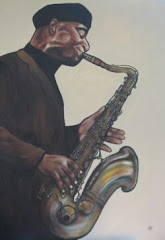











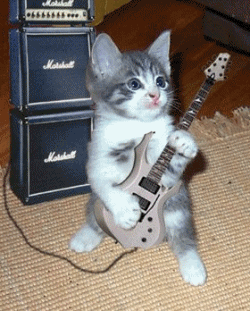




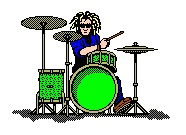

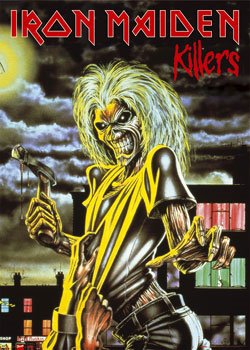















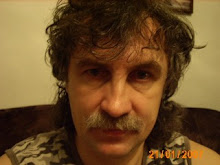
Žádné komentáře:
Okomentovat